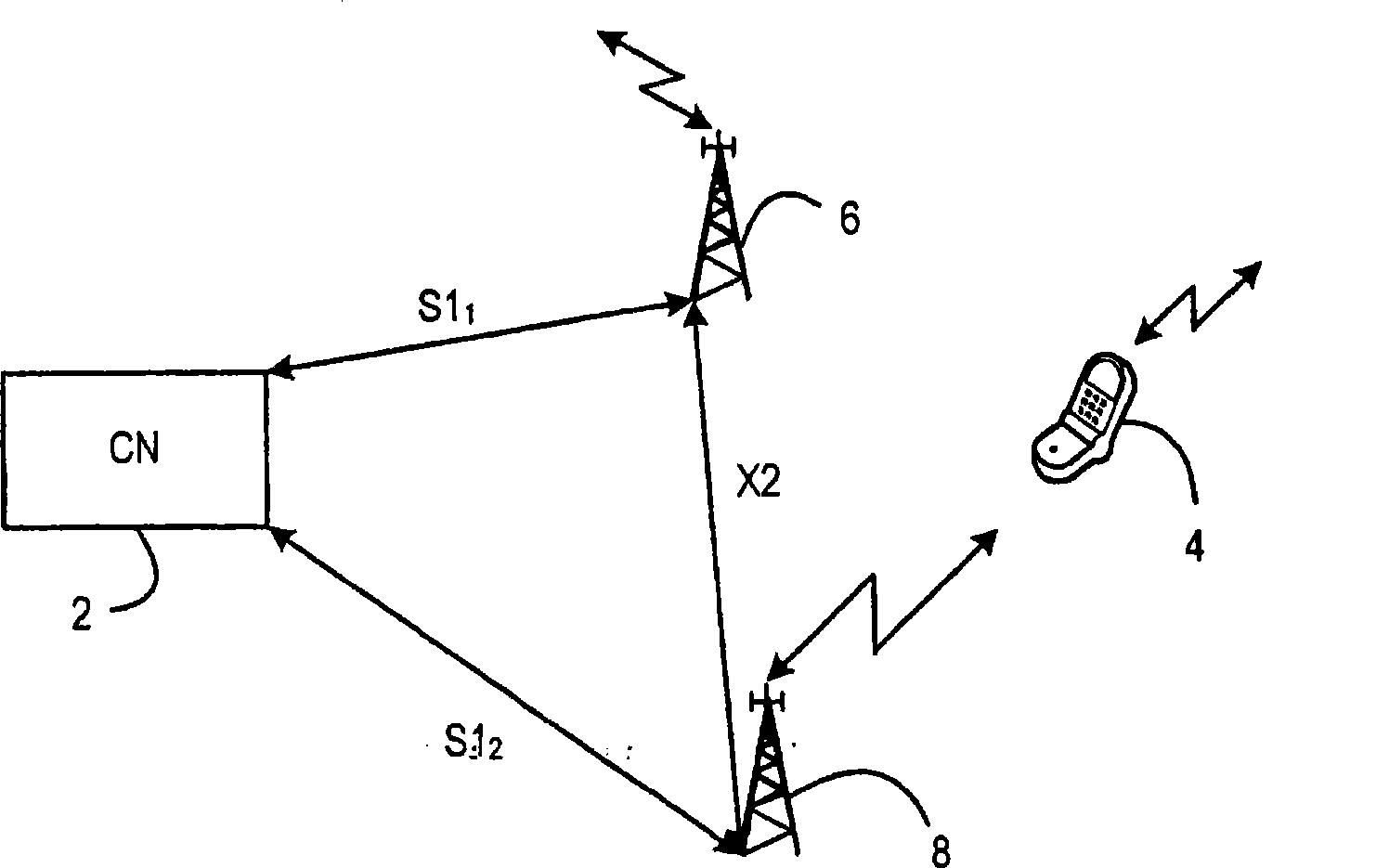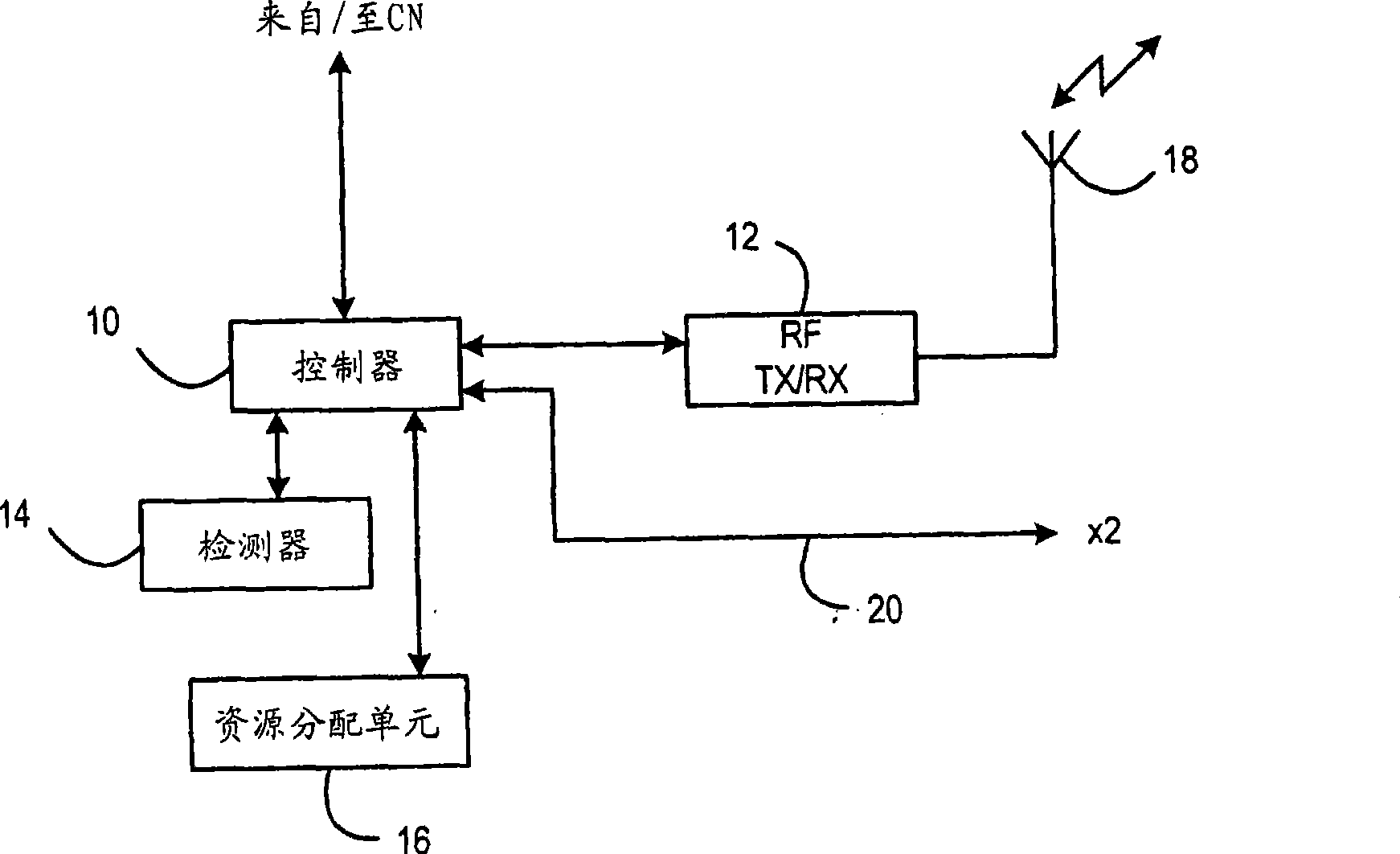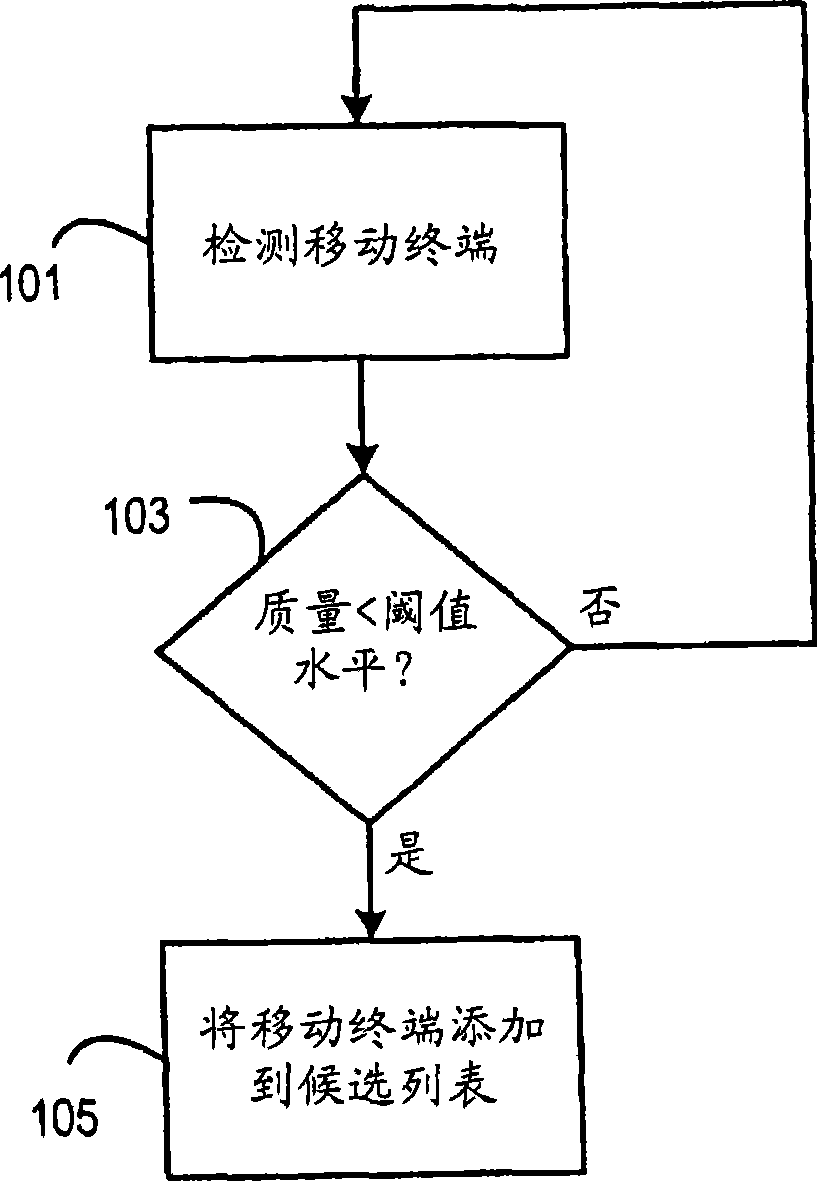Wireless telecommunications systems
A wireless telecommunications and distributed communication technology, applied in wireless communication, electrical components, network planning, etc., can solve problems such as asynchronous random access of mobile terminals, optimized performance, and communication harassment
- Summary
- Abstract
- Description
- Claims
- Application Information
AI Technical Summary
Problems solved by technology
Method used
Image
Examples
Embodiment Construction
[0035] figure 1 is a schematic diagram of a wireless telecommunications system 1 operating in accordance with an aspect of the present invention. figure 1 The system 1 includes a core network (CN) resource 2 , a first base station 6 , and a second base station 8 . The first base station 6 defines a first communication cell within which communication with mobile terminals is handled by the first base station 6 . Likewise, the second base station 8 defines a second communication cell within which communication with the mobile terminal is handled by the second base station 8 . exist figure 1 An exemplary mobile terminal (or user equipment UE) 4 is illustrated in . As is well known and understood, using signaling link S1 1 and S1 2 , each base station can communicate with core network resources 2 for call routing and other tasks. Also, the first base station 6 and the second base station 8 are able to communicate with each other using the communication route (or interface) X...
PUM
 Login to View More
Login to View More Abstract
Description
Claims
Application Information
 Login to View More
Login to View More - R&D
- Intellectual Property
- Life Sciences
- Materials
- Tech Scout
- Unparalleled Data Quality
- Higher Quality Content
- 60% Fewer Hallucinations
Browse by: Latest US Patents, China's latest patents, Technical Efficacy Thesaurus, Application Domain, Technology Topic, Popular Technical Reports.
© 2025 PatSnap. All rights reserved.Legal|Privacy policy|Modern Slavery Act Transparency Statement|Sitemap|About US| Contact US: help@patsnap.com



